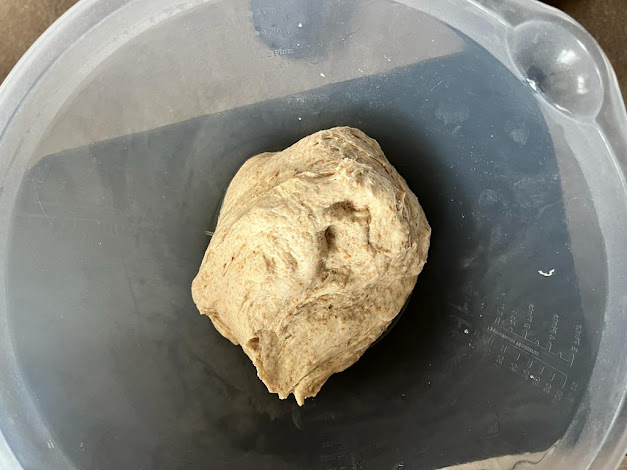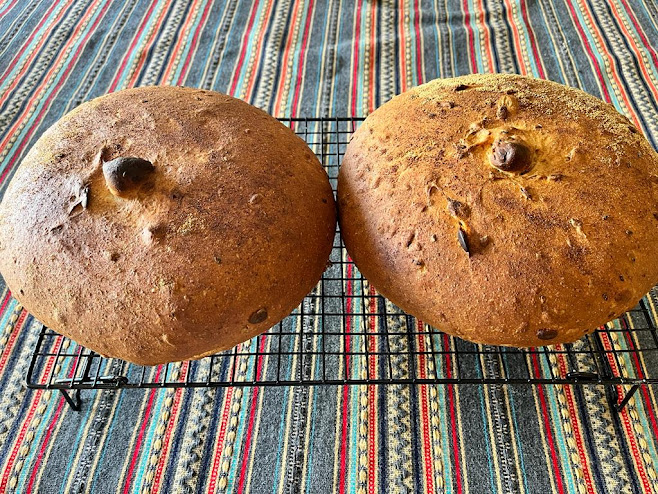Pan Gallego
Welcome to another step-by-step recipe from BreadClub20. Why not drop by our main Facebook page by clicking here.... If you like what you see and enjoy the recipe, we hope you go on to join us by 'Liking' and 'Subscribing'.
I've long fought against the attitude that bread is 'just for eating'. After all, bread must be our first manufactured product. Probably abut 8000BC in the Middle East, someone made a conscious decision to grind early grains, mix them with water and leave the mixture to nature. Then, and as important, there was a second conscious decision at some point to apply heat and bake what had been produced. What resulted was bread.
Over time, bread has developed its own identity. Geography, climate, altitude, humidity and, most of all, culture, has led to specific breads in specific regions and for specific people and reasons.
Galicia is part of Atlantic Europe. It borders Portugal to the south, Castile, Leon and Asturias to the east, the Cantabrian Sea to the north and the Atlantic Ocean to the west.
During Roman times, it was taken by the Gemanic Suebi and became the first medieval kingdom in Europe. Today, it is an autonomous country within Spain and carries an historic identity protected under Spanish law. As such, it has, over time, developed its own customs, culture, food and language.
Which brings me to Pan Gallego. Not simply 'just for eating' but also to be duly recognised as carrying Protected Geographical Indication (PGI) since December 2019.
You'll find two forms of Pan Gallego. One has a sourdough base and then other a yeasted base.
This is the yeasted version of a very old and famous Galician bread. I hope you enjoy it.
INGREDIENTS
350 gms strong white bread flour
115 gms wholemeal bread flour
275 gms tepid water (preferably filtered)
10 gms crushed sea salt
30 gms of oil (olive or similar or 30 gms vegetable shortening)
7 gms instant active yeast (or equivalent dried / fresh)
30 gms pumpkin seeds
30 gms sunflower seeds
15 gms linseed (golden or brown)
semolina flour for dusting
METHOD
Leave the seeds until stage 4.
1. Add the wet ingredients to the dry and mix thoroughly.
2. Bring it all together and knead on a non-floured surface until you have a smooth and elastic dough.
3. Place in a lightly-oiled bowl and place in a warm spot until it has doubled in size. This should take anywhere between one and two hours.
4. Turn out onto a floured board and knock back. Add the seeds and knead them in until thoroughly incorporated.
5. Shape into a boule, cover with a cloth and leave for ten minutes.
6. Reshape into a tight boule and place on a prepared baking sheet.
7. Using your fingers, twist the centre top of the dough to make a 'top knot'.
8. Dust with semolina flour or equivalent, loosely cover with a large bowl (a cloth might disturb the artistic and singular 'top knot') and leave to proof in a warm place for 45 minutes.
9. Pre-heat the oven to 220⁰C. Place a bowl of boiling water in the bottom of the oven to generate steam.
10. Take the cover off the bread and bake it for 10 minutes with steam.
11. Remove the source of the steam and continue to bake for 20 - 30 minutes until it's golden brown and hollow when tapped underneath.
.jpeg)




.jpeg)
.jpeg)


.jpeg)


Comments
Post a Comment